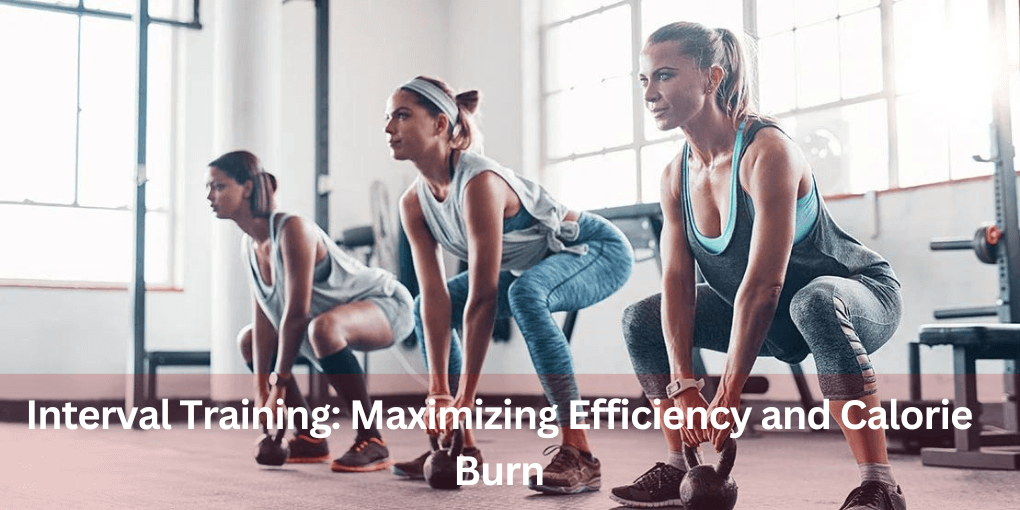
In the world of fitness, people are always looking for ways to maximize the effectiveness of their workouts.
Whether your goal is to build muscle, lose weight, or just improve overall fitness, it’s essential to approach exercise with a strategy that maximizes efficiency and calorie burn.
By incorporating various techniques into your routine, you can optimize your workouts and get the most out of every minute you spend exercising.
In this article, we’ll explore some tips for maximizing efficiency and calorie burn during exercise, helping you achieve your fitness goals more quickly and effectively.
Tips to Maximize Efficiency and Calorie Burn During a Workout
1. Include high-intensity interval training (HIIT)
HIIT is a type of aerobic exercise that consists of brief bursts of vigorous activity followed by rest intervals.
By alternating high-intensity intervals with intervals of low-intensity exercise or rest, your body can burn more calories in a shorter amount of time.
2. Vary Your Workouts
Doing the same workout or exercise routine day after day can lead to boredom and decreased effectiveness.
Incorporating a variety of exercises into your routine can challenge your body in different ways and maximize calorie burn.
3. Lift Weights
Resistance training, such as weightlifting, can burn a significant number of calories while building lean muscle.
Not only can muscle burn calories at rest, but building muscle can also increase metabolism.
4. Stay Hydrated
Drinking enough water before, during, and after exercise is crucial to maximizing calorie burn and performance.
Dehydration has been linked to injury, poor performance, and weariness.
5. Focus on Proper Form
Proper exercise form ensures that you’re targeting the correct muscles and maximizing the effectiveness of your workouts.
By using the correct technique, you can also help prevent injury and ensure consistent progress.
Table of Contents
ToggleHow to Calculate Your Calorie Burn and Optimize Your Workouts
If you want to maximize the efficiency of your workouts and achieve your fitness goals, it’s crucial to understand how to calculate your calorie burn during exercise.
Here are some steps to help you calculate your calorie burn and optimize your workouts:
1. Determine your BMR (Basal Metabolic Rate)
Your body burns a certain number of calories while at rest, or BMR. You can use an online calculator for this.
2. Calculate your TDEE (Total Daily Energy Expenditure)
TDEE is the total number of calories your body burns in a day, including physical activity To calculate TDEE, multiply your BMR by an activity factor (typically 1.2–1.9, depending on your level of activity).
3. Use a fitness tracker or app
Using a fitness tracker or app that monitors your heart rate, duration of the workout, and type of activity can help you calculate your calorie burn more accurately.
4. Take note of the intensity
Higher-intensity workouts burn more calories than lower-intensity workouts. For instance, compared to walking, running burns more calories.
5. Adjust your calorie intake
Once you’ve calculated your calorie burn, adjust your calorie intake accordingly. You must generate a calorie deficit if you want to lose weight. If you’re looking to gain muscle, you’ll need to consume more calories than you burn.
Integrating HIIT Workouts into Your Routine for Maximum Calorie Burn
In recent times, High-Intensity Interval Training (HIIT) has become increasingly popular as an effective approach to enhance the number of calories burnt during exercise.
Here are some tips for integrating HIIT workouts into your routine:
- Start with a warm-up: Warm up for 5-10 minutes before starting a HIIT workout to prevent injury and prepare your body for the higher-intensity exercise to come.
- Choose your exercise: HIIT can be performed with various exercises, including running, cycling, jumping rope, or bodyweight exercises. Choose an exercise that you enjoy and can perform at a high intensity.
- Alternate high-intensity intervals with low-intensity recovery periods: Alternate between periods of high-intensity exercise and low-intensity exercise or rest periods. For example, sprint for 30 seconds, followed by a 30-second rest period or jogging.
- Customize the intervals: The length of the intervals depends on your fitness level and goals. If you’re new to HIIT, start with shorter intervals and gradually increase the length as you build endurance.
- Cool down and stretch: After completing a HIIT workout, cool down for 5-10 minutes and stretch to prevent soreness and muscle tightness.
The Role of Diet in Maximizing Efficiency and Calorie Burn
When it comes to maximizing efficiency and calorie burn during exercise, diet plays an important role. Here are some ways in which diet can impact your caloric burn and exercise efficiency:
- Energy intake: Consuming enough calories to fuel your exercise is essential to achieving optimal results. Consuming too little calories can result in fatigue, decreased performance, and burnout.
- Macronutrient intake: Macronutrients, such as carbohydrates, proteins, and fats, play a critical role in fueling your body during exercise. Carbohydrates are the primary source of energy for high-intensity exercise, while protein is needed for muscle growth and recovery.
- Hydration: Staying hydrated before, during, and after exercise is crucial. Adequate hydration helps maintain optimal exercise performance and helps prevent dehydration, which can negatively impact calorie burn and overall exercise effectiveness.
- Nutrient Timing: The timing of when you consume carbohydrates and protein can impact your energy levels, performance, and overall calorie burn. Consuming simple carbohydrates after a workout can help replenish glycogen stores and improve recovery.
- Meal Timing: Timing your meals can also impact exercise performance. Consuming a small meal or snack 1-2 hours before exercise can provide energy and help prevent hunger during exercise.
The Importance of Rest and Recovery in Ensuring Optimal Calorie Burn
While pushing yourself during exercise is important, it’s equally important to take breaks and allow yourself time for rest and recovery.
Here are some ways in which rest and recovery can impact calorie burn and exercise efficiency:
Reduces the risk of injury
Rest and recovery time allows your body to heal and recover from exercise-induced damage and can help you avoid injury.
Improves energy levels
Rest and recovery time helps improve energy levels, allowing you to perform better during the next workout or exercise session.
Builds strength and muscle mass
Rest and recovery time is essential for building strength and muscle mass, allowing you to increase weight and resistance during workouts and burn more calories over time.
Maintains calorie burn efficiency
Over-exercising without appropriate rest and recovery can lead to fatigue and decreased exercise efficiency, which negatively impacts calorie burn.
Reduces stress levels
Rest and recovery can help reduce stress levels. High-stress levels can lead to increased cortisol levels, which can lead to weight gain and decreased calorie burn.
The Benefits of Strength Training for Long-Term Efficiency and Calorie Burn
Strength training is a critical component of long-term efficiency and calorie burn during exercise. Here are the benefits of strength training:
- Increases muscle mass: Building lean muscle mass through strength training helps you burn more calories even at rest. Muscle tissue is more metabolically active than fat tissue, so the more muscle you have, the more calories you burn, even when you’re not exercising.
- Boosts metabolism: Strength training boosts metabolism, allowing you to burn more calories throughout the day. The metabolic rate can increase by as much as 15% after completing a strength training workout.
- Enhances overall fitness: Strength training improves overall fitness, leading to better performance during cardiovascular exercise and other physical activities.
- Helps prevent injury: Strength training helps increase bone density and joint stability, which can help prevent injury during exercise or daily activities.
- Improves body composition: Strength training can help improve body composition by reducing body fat and increasing muscle mass, leading to a leaner and more toned physique.
Tracking Progress: How to Monitor Your Calorie Burn and Adjust Your Workout
Monitoring your calorie burn and progress is essential to optimize your workouts and achieve your fitness goals.
Here are some ways to track your progress and adjust your workout routine over time:
Keep a workout journal
Record the type of exercise, duration, intensity, and perceived exertion level after each workout session to monitor your progress.
Use a fitness tracker or app
Fitness trackers or apps monitor your heart rate, the duration of the workout, and the number of calories burned during a workout. Monitoring these metrics can help you set goals and track your progress over time.
Complete fitness assessments
A fitness assessment measures various aspects of your fitness, such as strength, flexibility, and cardiovascular endurance. Completing regular assessments can help identify areas for improvement and track your progress.
Adjust your workout routine
Make adjustments to your workout routine as you progress. Gradually increase the duration or intensity of your workouts, or try new exercises to keep your workout fresh and challenging.
Maximizing Efficiency and Calorie Burn Without a Gym Membership
A gym membership is not necessary to maximize efficiency and calorie burn during exercise. Here are some ways to achieve your fitness goals without a gym membership:
- Outdoor cardio: Running, cycling, hiking, and swimming are all effective ways to burn calories and improve overall fitness.
- Bodyweight exercises: Bodyweight exercises, such as push-ups, squats, lunges, planks, and burpees, are effective for building strength and can be done anywhere.
- HIIT workouts: HIIT workouts require little or no equipment and can be done anywhere. Bodyweight exercises can be combined with high-intensity cardio intervals for a challenging workout.
- Resistance bands: Resistance bands are affordable and portable, making them an effective alternative to weights for strength training.
- Online resources: There are plenty of online resources available for free or low cost, such as workout videos, fitness apps, and virtual fitness classes.
Conclusion
Achieving maximal efficiency and calorie burn during exercise requires a multifaceted approach.
Focusing on factors such as exercise type, intensity, duration, rest intervals, proper nutrition, rest and recovery, and progress tracking can all contribute to achieving optimal results.
Whether it’s through incorporating HIIT workouts, strength training, or outdoor activities, there are numerous ways to achieve the desired results without a gym membership.
By prioritizing overall health and fitness goals, and being mindful of exercise habits and dietary intake, anyone can achieve a healthy and active lifestyle.




